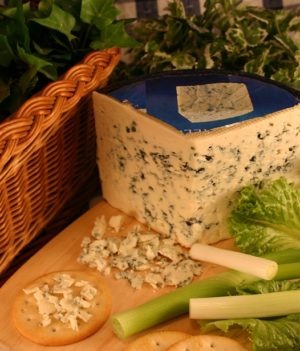Blog
Why is Cheese Aged?

We all love eating cheese, but how much do we know about the process of making it? Today, let’s explore why cheese is aged and what this process does.
Aging cheese is sometimes called ripening. Some say that this is the most important part of the cheesemaking process because it gives each cheese its distinctive characteristics.
How does the cheesemaking process start?
Cheese is made by culturing milk, adding rennet and then separating the curds from the whey. These curds make cheese and are usually salted to start the process.
We eat some cheeses, such as ricotta and mozzarella, when they are young and unripened. However, most cheeses are aged for varying lengths of time.
Why are cheeses aged?
Cheeses are aged in order to transform the texture and intensify the flavor. The microbes and enzymes contained within the cheese react to the temperature and moisture of their environment, creating the different cheeses that we know and love.
What happens whilst a cheese is aging?
Over time, the cultures that were added to the cheese will grow and eat the lactose in the milk, changing it into lactic acid. Lactic acid gives cheeses their sharpness and tanginess.
There is also a process known as proteolysis, where the long protein strands created when the rennet was added begin to break down. These are responsible for the flavors that we experience in aged cheeses such as gouda and parmesan. If a cheese is smoky or nutty, it is because of the proteolysis.
This proteolysis also creates the gooey texture found in camembert, brie and limburger cheese.

Who is in charge of the aging process?
The person who looks after the cheese and decides how it is aged is known as an affineur.
Where are cheeses aged?
This all depends on the cheese and the desired effect of the aging.
Cheeses have historically been ripened in caves. Caves have a cool temperature and a high humidity, which allows the cheese to ripen without losing too much volume. Cheese is also very porous and so it takes on flavor from its surroundings. Aging in a cave allows the cheese to develop a strong, nutty flavor.
Some cheeses will be aged in a refrigerator or in a cool space such as a cellar. The affineur will make careful choices about the humidity and temperature involved to create the final product.

What about blue cheeses? How are they ripened?
Blue cheeses, such as Danish Blue and Stilton, have Penicillium cultures added to them. Tiny holes are made in the cheese to allow the air to reach the cultures. This encourages the blue/green veins that we recognize to form.
Can I age cheese that I have made at home?
Yes, you can. We recommend reading as much as you can about the cheese you are making before doing so. Some cheesemakers have had success using a wine refrigerator or spare refrigerator to age cheeses.
So, now you know about the cheese aging process! Do you have other questions about cheese making? Let us know in the comments and we’ll do our best to answer them!




